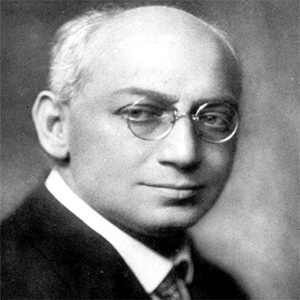Sandor Ferenczi’s concept of the dialogue of unconsciouses: a clinical example

Submitted: August 1, 2022
Accepted: April 17, 2023
Published: May 2, 2023
Accepted: April 17, 2023
Abstract Views: 1032
PDF: 260
HTML: 43
HTML: 43
Publisher's note
All claims expressed in this article are solely those of the authors and do not necessarily represent those of their affiliated organizations, or those of the publisher, the editors and the reviewers. Any product that may be evaluated in this article or claim that may be made by its manufacturer is not guaranteed or endorsed by the publisher.
All claims expressed in this article are solely those of the authors and do not necessarily represent those of their affiliated organizations, or those of the publisher, the editors and the reviewers. Any product that may be evaluated in this article or claim that may be made by its manufacturer is not guaranteed or endorsed by the publisher.
Similar Articles
- Daniela Di Riso, Antonello Colli, Daphne Chessa, Cristina Marogna, Valeria Condino, Adriana Lis, Vittorio Lingiardi, Stefania Mannarini, A supportive approach in psychodynamic-oriented psychotherapy. An empirically supported single case study. , Research in Psychotherapy: Psychopathology, Process and Outcome: Vol. 14 No. 1 (2011)
- Annalisa Tanzilli, Michele Majorana, Laura Fonzi, Mauro Pallagrosi, Angelo Picardi, Maria Antonietta Coccanari de’ Fornari, Massimo Biondi, Vittorio Lingiardi, Relational variables in short-term psychodynamic psychotherapy: an effectiveness study , Research in Psychotherapy: Psychopathology, Process and Outcome: Vol. 21 No. 3 (2018)
- Miriam Steele, Anna Maria Speranza, Special issue: Research in child and adolescent psychotherapy , Research in Psychotherapy: Psychopathology, Process and Outcome: Vol. 25 No. 1 (2022)
- Anna Dourdouma, Kathrin Mörtl, The Creative Journey of Grounded Theory Analysis: A Guide to its Principles and Applications , Research in Psychotherapy: Psychopathology, Process and Outcome: Vol. 15 No. 2 (2012)
- Alessandra De Coro, Silvia Andreassi, Rachele Mariani, Elisabetta Iberni, Valeria Crisafulli, Adriana Matarrese, The evaluation of outcomes and process in psychotherapies offered by Mental Health Centers and an University Clinical Psychology Center , Research in Psychotherapy: Psychopathology, Process and Outcome: Vol. 13 No. 2 (2010)
- Nino Dazzi, Some critical considerations about the document Psychotherapies for Anxiety and Depression: benefits and costs , Research in Psychotherapy: Psychopathology, Process and Outcome: Vol. 20 No. 2 (2017)
- Leandro Martín Casari, Mirta Susana Ison, Beatriz Margarita María Gómez, Personal style of the therapist and personality dimensions in a sample of Argentinian therapists , Research in Psychotherapy: Psychopathology, Process and Outcome: Vol. 22 No. 2 (2019)
- Alessia Renzi, Rachele Mariani, Michela Di Trani, Renata Tambelli, Giving words to emotions: the use of linguistic analysis to explore the role of alexithymia in an expressive writing intervention , Research in Psychotherapy: Psychopathology, Process and Outcome: Vol. 23 No. 2 (2020)
- Maria Pia Casini, Marta Moselli, Alice Wisniewski, Riccardo Williams, The role of suicidal motivations in adolescence: implications for the psychotherapeutic treatment of suicidal risk , Research in Psychotherapy: Psychopathology, Process and Outcome: Online Advance Publication
- Maria Pontillo, Maria Cristina Tata, Roberto Averna, Prisca Gargiullo, Silvia Guerrera, Stefano Vicari, Clinical profile, conversion rate, and suicidal thinking and behaviour in children and adolescents at ultra-high risk for psychosis: a theoretical perspective , Research in Psychotherapy: Psychopathology, Process and Outcome: Vol. 23 No. 1 (2020)
<< < 15 16 17 18 19 20 21 22 23 24 > >>
You may also start an advanced similarity search for this article.

 https://doi.org/10.4081/ripppo.2023.655
https://doi.org/10.4081/ripppo.2023.655





